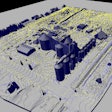In the world of agribusiness software development, three key trends have driven innovation: the rapid speed of technological advancement; the consolidation of the private elevators into multi-division, multi-location conglomerates; and the volatility of commodity markets. Agribusinesses began overhauling how they collect and use data decades ago, but today’s operations management software has been tailored to assist sites in managing their risk exposure. Instant access to real-time financials, inventory reports and market information has become a vital function in modern day grain and feed mill operations.
“The faster you can get at the information, the better you can manage your company,” explains Oakland Corporation’s vice president Chuck Carlson explains. “Companies have so much at risk as far as dollar values they need quicker access to their status — and monthly reports do not cut it.
Without close observation, grain companies can lose of money; however, with a solid software system, cooperatives and elevators can immediately address pricing problems or inventory issues before it’s too late. Real-time positioning allows managers to do its cash contracts, and allows grain merchandisers to gauge what needs to be bought or sold to properly position the company for less exposure on their commodity prices.
"[Manager’s] want to know they've covered their exposure to make better decisions — like whether it needs to buy or sell and where you should be profitability wise," says Sherry Drutman, vice president North American sales, OpenLink Agribusiness Solutions Group. "If you have too many cash contracts and haven’t hedged the market — and as we know the last few years the market has been crazy — it’s important to figure out where you’re going."
Tips for purchasing new operations management software
Given the importance of this fundamental business function, if your company is looking to upgrade or enhance its software package, how do you decide what to look for in a software package? Industry suppliers weighed in to our
“Risk management should be most important factor to address in a company,” Drutman says. “Instant live information is crucial for people to be able to point and click to find what you want right away.”
1) Full-Service Supplier
While the functionality of the software is important, the level of service the supplier provides after the sale and its understanding of your business is an important factor influencing the success of the software application.
“Software is a byproduct of what the service provides,” Carlson says. “If the software supplier has employees who have worked at a cooperative or agribusiness site before — knows what you go through day-in and day-out —they can use their experience to help its development staff understand what you need from its operations management software.”
Many times the software representative acts as a consultant to the customer by introducing best practices and the new procedures innate to updated accounting and site management systems.
Customers are advised not to purchase from resellers who may not be sure of the product’s full abilities.
“When you buy an application you’re not just buying it for a year or two, you hope you never have to do this again,” Drutman notes. “The people you’re dealing with will be around to let you enhance the system — to grow with you — you want them to be able to offer upgrades and enhancements and show they do enhance their products.”
Ask the supplier for testimonials or other customers who may be interested in sharing their experience with the product.
2) Onsite Training
When it comes to new technology, the level of comfort will vary with every employee within every company — and, yes, it takes longer to train the less computer savvy operator so it’s especially important that the software supplier respects the pace the person or entity needs.
“Our goal is making sure they are comfortable before considering the installation complete,” Carlson says. “We go onsite to train and deal with real time situations.”
Oftentimes, the trainee will be taught how to use the system using a dummy program so the real information isn’t altered. This onsite interaction also provides additional opportunities for the software supplier to learn to better adapt the software to the client’s needs.
3) Customization
Agribusiness is changing so fast and the information can come and go in all different directions so the software system a company purchases should offer some level of customization.
“Sometimes [software] looks great when you buy it, but as the grain business evolves — your business changes — if you don’t have a software supplier who is offering updates and changing with these new requirements, you’re going to be back to where you were with an older system," Drutman says.
Carlson agrees: “Over the years, development is constant; we update all clients twice a year. Based on customer feedback, if we discover a feature even two customers have requested, we add it to the next development cycle and offer the option to everyone.”
Many packages allow the user to specific the level of automation it requires from its operations management software.
“Customers can customize how hands off they want to be,” Dan Barton, director of sales and marketing, Grossman and Associates. “Some companies use it as a failsafe — where they approve actions between steps; other places are comfortable with allowing most tasks to be automated.”
Not only be flexible on the front end, but flexible to change with the times and integrate with other systems.
4) Cross-platform Integration
Reed Schneider, who works in business development with iRely-Summit Software, suggests companies spend extra time researching the computer language the software and accounting is written in to ensure the platform is using up-to-date standard code.
“A lot of times the system will look graphical, like its Windows based, but it’s built on a Dos or “green screen” accounting system underneath — meaning the problems will come when you want to drill down in current or historical data because live data will ultimately be impossible,” Schneider says.
Check to make sure the software is truly fully integrated. Schneider explains: “You don’t want to end up with a modular system that has been cobble together from different sources. We call this the Tower of Babel effect, when you have different languages and different types of operating, it will likely lead to a problem.”
Buyers with existing systems also want to ensure the new system can operate on multiple platforms on multiple locations. Everyone leans on high speed data, but large amounts of data put greater demands on system. Ask about the system’s reliability and bandwidth.
5) Data Dashboard
As mentioned earlier, we live in a world of instant gratification, and manager and merchandisers need the tools to be able to make decisions faster. Upper management doesn’t necessarily want to take the time to learn how a software package works so a data dashboard offers a customizable, at-a-glance overview of pertinent information without the need to drill down deep into the software.
“Management wants to know information, but doesn’t want to hunt for it,” Carlson says. “A dashboard offers this solution by allowing the user to pull the screen up and see the company’s cash position, grain positions, where accounts receivable, accounts payable is at, cash flow statements.”
6) Technology
Thought it may cost more money on the front end, it's better to invest in new technology that does what you want and need on rather than dealing with the consequences of an antiquated system.
“Sky’s the limit,” Barton says. “Technology has proven to be the most valuable tool because you can do anything with it. It’s great because you can tailor the software to do what someone wants it to do and not everybody needs it to do the same thing, but you can give them what they need.”
Vendors predict more emphasis will be placed on mobile applications for tracking real-time numbers from a cell phone or tablet.
7) Improved Customer Service
The residual benefit of these efficiencies is the ability for grain elevators and feed mills to provide better, more accurate service to their customers. Companies are increasingly automating the dissemination of administrative and communications duties to make operations leaner, for example, a distribution system sending statements, pay receipts and invoices to customers.
“In contrast, I’ve been told by a lot of managers they want to automated portions of their document delivery, but their customers, the farmers, enjoy coming like coming and the interaction so they won’t do it because they don’t want to cut out the human interaction,” Barton notes.
8) Cost, Labor Savings
A strong software package can create profitability once everything is streamlined within one system. Efficiency may mean reducing your work force. The move toward paperless, integrated software means – then you don’t have to wait for stuff to get done.
“The big goal to install a system with one touchpoint, all your work in one place – it’s integrated so no one is doing double entering,” Drutman says. This allows the small office to focus on what [tasks] it thinks is important, and leaves the rest to the system.
“The bottom line is what’s going to keep you in business and more and more people looking to reduce their workforce – whether we like it or not — and the only way to do that is to be more efficient and invest money into your infrastructure.”
A strong front and back solution for an elevator, operations management software package intertwines all functions that otherwise would typically need to be manually entered is done automatically. You may be buying a system to replace individuals, but it saves time and money because it performs functions at the push of the button.
The benefits of a quality operation management software package come down to the integrity of the data. When you have integrity of the data, it’s much easier to manage your company and go home with piece of mind.


















